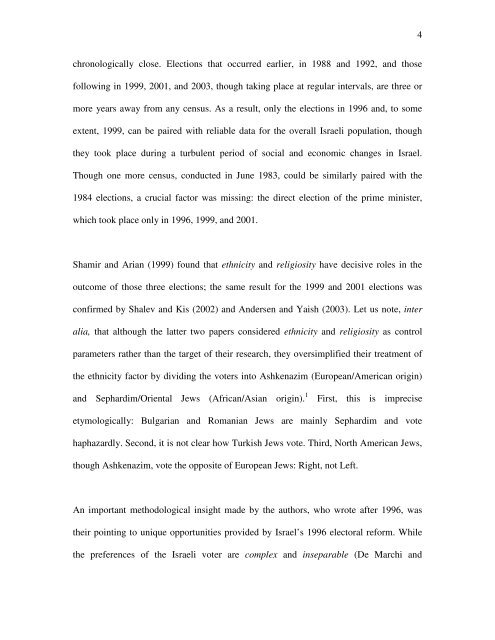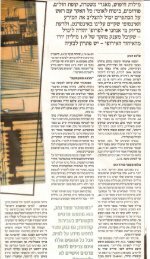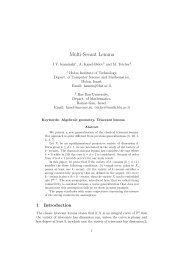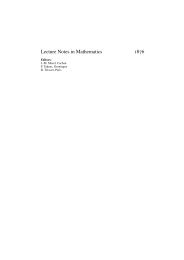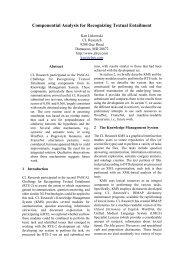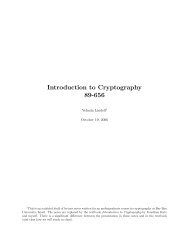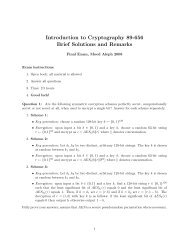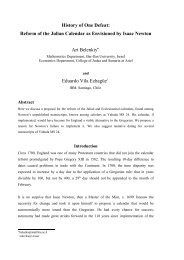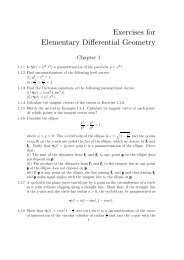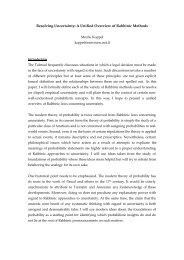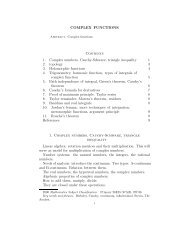The Green Line and the Security Fence:
The Green Line and the Security Fence:
The Green Line and the Security Fence:
You also want an ePaper? Increase the reach of your titles
YUMPU automatically turns print PDFs into web optimized ePapers that Google loves.
4<br />
chronologically close. Elections that occurred earlier, in 1988 <strong>and</strong> 1992, <strong>and</strong> those<br />
following in 1999, 2001, <strong>and</strong> 2003, though taking place at regular intervals, are three or<br />
more years away from any census. As a result, only <strong>the</strong> elections in 1996 <strong>and</strong>, to some<br />
extent, 1999, can be paired with reliable data for <strong>the</strong> overall Israeli population, though<br />
<strong>the</strong>y took place during a turbulent period of social <strong>and</strong> economic changes in Israel.<br />
Though one more census, conducted in June 1983, could be similarly paired with <strong>the</strong><br />
1984 elections, a crucial factor was missing: <strong>the</strong> direct election of <strong>the</strong> prime minister,<br />
which took place only in 1996, 1999, <strong>and</strong> 2001.<br />
Shamir <strong>and</strong> Arian (1999) found that ethnicity <strong>and</strong> religiosity have decisive roles in <strong>the</strong><br />
outcome of those three elections; <strong>the</strong> same result for <strong>the</strong> 1999 <strong>and</strong> 2001 elections was<br />
confirmed by Shalev <strong>and</strong> Kis (2002) <strong>and</strong> Andersen <strong>and</strong> Yaish (2003). Let us note, inter<br />
alia, that although <strong>the</strong> latter two papers considered ethnicity <strong>and</strong> religiosity as control<br />
parameters ra<strong>the</strong>r than <strong>the</strong> target of <strong>the</strong>ir research, <strong>the</strong>y oversimplified <strong>the</strong>ir treatment of<br />
<strong>the</strong> ethnicity factor by dividing <strong>the</strong> voters into Ashkenazim (European/American origin)<br />
<strong>and</strong> Sephardim/Oriental Jews (African/Asian origin). 1<br />
First, this is imprecise<br />
etymologically: Bulgarian <strong>and</strong> Romanian Jews are mainly Sephardim <strong>and</strong> vote<br />
haphazardly. Second, it is not clear how Turkish Jews vote. Third, North American Jews,<br />
though Ashkenazim, vote <strong>the</strong> opposite of European Jews: Right, not Left.<br />
An important methodological insight made by <strong>the</strong> authors, who wrote after 1996, was<br />
<strong>the</strong>ir pointing to unique opportunities provided by Israel’s 1996 electoral reform. While<br />
<strong>the</strong> preferences of <strong>the</strong> Israeli voter are complex <strong>and</strong> inseparable (De Marchi <strong>and</strong>


